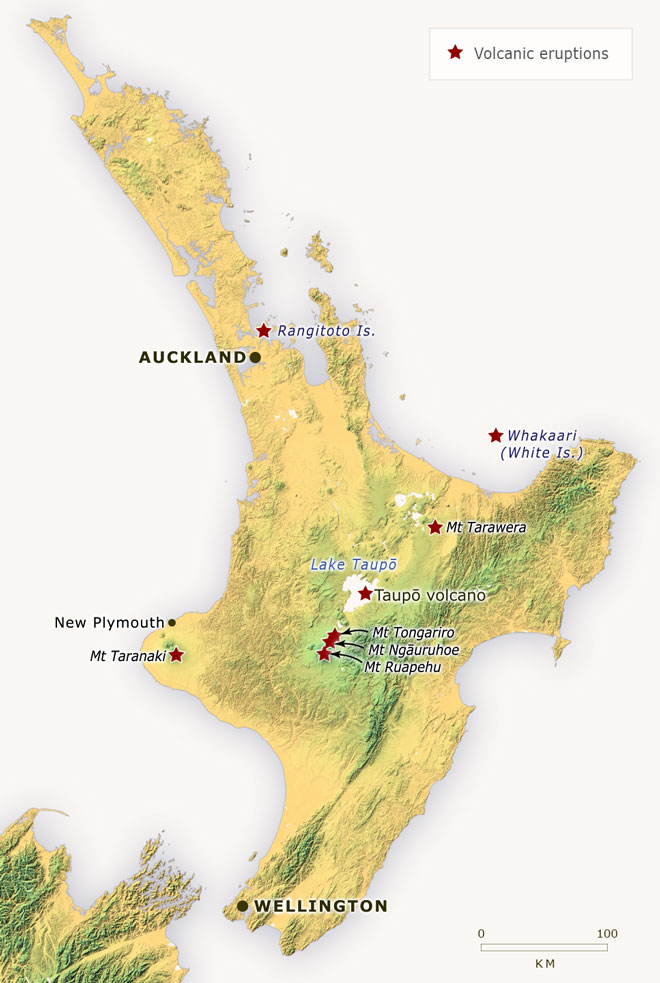The centerpiece of our trip to New Zealand was the five day hike in the Nelson Lakes area. We scheduled with Southern Wilderness for their "gourmet" guided hike covering a part of the Travers Sabine Circuit. The red dashed line shows the whole Travers Sabine Circuit. We started at "1" in St Arnaud and took a boat to "2". From there we hiked from 2 through 5 and took a boat back to 6. The lower three of the huts with green circles show where we spent nights (we spent two nights at the hut at point "3".
The section from "3" to "4" was an optional day hike up to Blue Lake.
The hikers: Me, Mig, Don and an Australian lady named Norma:
 |
| Boat ride to trail head at beginning of hike |
The guides: Angus and Toni. He is now the owner of the company having taken it over from the previous owner. They were both very friendly and seemed to enjoy what they were doing. It has got to be grueling, but satisfying work. They did all the cooking on the trip and carried nearly all the food. I tried picking up his pack at the beginning of the trip and it must have been around 60lbs.
 |
| Boat ride back at end of hike |
The entire hike was probably 60-70km (40 miles). On 3 of the days we did a net 400-500 meters of elevation (not counting ups and downs in between). With a 25lb pack, I wasn't sure how tough that would be. It turned out just about right. Even though the distances weren't that long, the track was often pretty rough. We were walking along steep slopes, and clambering over roots, rocks and streams. There were a number of places where a stumble could have led to painful, possibly fatal consequences. A few shots of typical parts of the trail:
 |
| Roots, mud, tree trunk |
 |
| Steep Slope |
 |
| Roots, roots... there's a trail there somewhere... |
 |
| ... more roots... and more steep slopes... |
The trails are maintained by the New Zealand Department of Conservation. Though rugged, they were generally well marked and had bridges at key points. We encountered several swing bridges which were my favorites. Usually, they are limited to one person on them at a time.
 |
| Single person swing bridge |
 |
| Scree slope |
We were in a mountain range called the Southern Alps which provided some beautiful scenery.
 |
| Climbing towards Travers Pass |
 |
Enjoying view shortly after crossing the Travers Saddle
On the second to last day, we had a day trip up to Blue Lake, one of the clearest lakes in the world (photo below). Behind Blue Lake, at the top of the ridge behind it is another lake. Water from this lake feeds into Blue Lake by filtering through hundreds of feet of earth and most of the particulate matter is filtered out in the process.
|
 |
| Blue Lake |














